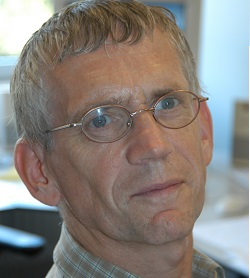Decentralized Management of Energy Streams in Smart Grids
A special issue of Energies (ISSN 1996-1073).
Deadline for manuscript submissions: closed (30 April 2016) | Viewed by 119872
Special Issue Editor
Interests: demand side management, smart grids; energy-autonomous regions; distributed optimization algorithms; embedded systems; low-power systems; control of storage systems; local heat distribution systems
Special Issues, Collections and Topics in MDPI journals
Special Issue Information
Dear Collegaues,
Many countries have a political target to become less dependent on fossil fuels. As a consequence, more and more energy is generated from fluctuating renewable energy sources (e.g., PV, wind, biogas, hydro, geothermic). The continuous growth of renewable generation, accompanied by their decentralized operation, is leading to massive grid investment needs if no appropriate actions are taken. With the current grid infrastructure, and an increasing percentage of renewable energy generation, there will be days that, during certain hours (e.g., around noon with low PV and wind production), not all renewable energy generated in certain parts of the power grid can be transported to other regions and, therefore, has to be curtailed. On the other hand, it is also expected that the need for electricity will grow in the future due to an increasing electrification of heating and transport. Large quantities of E-vehicles and heat pumps enlarge variability and lead to higher peak load concentrations, which may increase the need for costly grid capacity investments.
To avoid or reduce the need for grid investments, especially in distribution grids, it is essential to exploit the flexibility available in the grid, e.g., by controlling/optimizing the charging of E-vehicles, time-shiftable appliances (e.g., washing machines, air-conditioners, freezers, heat pumps). and storage assets. Such an optimization of energy streams is often called Demand Side Management (DSM) and has the goal to reach a certain objective for the consumption of electricity within a distribution grid. The objective may for example be market driven or technology driven (e.g., avoiding violation of grid restrictions).
In a longer term, with a much higher penetration of renewable generation, it will become even more important to optimize the power profiles of parts of the power grid, not only within a day, but also over days or weeks, since, otherwise, the resulting imbalances will ask for a large amount of central reserve capacity (predominantly based on fossil fuels and dimensioned for the largest peak and hence operating with a low efficiency). For this, different forms of (decentralized) energy storage assets for short-term, as well as long-term, storage are needed. These storage assets need to be controlled/optimized as well.
In this Special Issue of Energies, we ask for original contributions related to decentralized management of energy streams in Smart Grids.
Prof. Dr. G.J.M. (Gerard) Smit
Guest Editor
Manuscript Submission Information
Manuscripts should be submitted online at www.mdpi.com by registering and logging in to this website. Once you are registered, click here to go to the submission form. Manuscripts can be submitted until the deadline. All submissions that pass pre-check are peer-reviewed. Accepted papers will be published continuously in the journal (as soon as accepted) and will be listed together on the special issue website. Research articles, review articles as well as short communications are invited. For planned papers, a title and short abstract (about 250 words) can be sent to the Editorial Office for assessment.
Submitted manuscripts should not have been published previously, nor be under consideration for publication elsewhere (except conference proceedings papers). All manuscripts are thoroughly refereed through a single-blind peer-review process. A guide for authors and other relevant information for submission of manuscripts is available on the Instructions for Authors page. Energies is an international peer-reviewed open access semimonthly journal published by MDPI.
Please visit the Instructions for Authors page before submitting a manuscript. The Article Processing Charge (APC) for publication in this open access journal is 2600 CHF (Swiss Francs). Submitted papers should be well formatted and use good English. Authors may use MDPI's English editing service prior to publication or during author revisions.
Keywords
- Decentralized energy management
- Demand Side Management
- Control of Storage in Smart Grids
- Optimization algorithms for Smart Grids
- Microgrids
- Control algorithms for charging of E-vehicles
- Control of infeed of renewables
- Power quality in distribution grids
- Prediction algorithms of renewables
Benefits of Publishing in a Special Issue
- Ease of navigation: Grouping papers by topic helps scholars navigate broad scope journals more efficiently.
- Greater discoverability: Special Issues support the reach and impact of scientific research. Articles in Special Issues are more discoverable and cited more frequently.
- Expansion of research network: Special Issues facilitate connections among authors, fostering scientific collaborations.
- External promotion: Articles in Special Issues are often promoted through the journal's social media, increasing their visibility.
- Reprint: MDPI Books provides the opportunity to republish successful Special Issues in book format, both online and in print.
Further information on MDPI's Special Issue policies can be found here.





